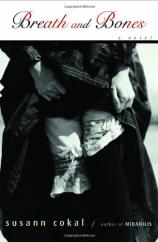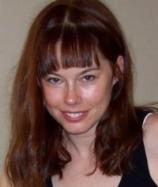Reading Group Guide
Discussion Questions
Breath and Bones

1. After living at the orphanage with its rigid structure and rules, Famke is liberated and sent to work on the farm in Dragor. When she leaves with Albert, she believes she's been given even more freedom. Yet, in truth, living with Albert is even more restrictive than her earlier life. What draws Famke to Albert initially and what not only makes her stay but leads her on a tumultuous adventure?
2. Before they leave for America, the Mormon women imagine what their lives will be like in the promising new world America: no more bad smells, no more hard lives. How does Famke react to America when she arrives? Utah's hot, arid climate is not at all what she was used to in Denmark. Were there any similarities?
3. Famke feverishly pursues Albert for months. What is she learning along the way? What compels her to continue, even as she becomes increasingly ill? What is her reaction once she finds him?
4. Throughout Famke's long search for Albert, Cokal intertwines humor with despair. How does this impact the story?
5. The often bleak landscapes of Denmark stand in stark contrast with Famke's fiery red hair and the vivid colors in Albert's painting. When Famke becomes seriously ill, she also sees vivid colors. How does color factor in to the story?
6. A significant portion of the story takes place in America. Why did the author move the story to American soil?
7. Famke assumes many different names in the story: Breath and Bones, Famke Summerfugl, Famke Summerfield, Ursula, Dante Castle, Ophelia, Fanny. What is the significance of these names?
8. Virtue is an important theme in this novel. Famke is quite the schemer. Is she also virtuous? Does your opinion about her change as the story progresses? What about the other characters --- Albert Castle, Sister Birgit, Viggo, Edouard Versailles, Heber Goodhouse --- how does virtue play in to their characterization?
9. Sister Birgit's life changed in many ways throughout the novel. Were you surprised to learn that the widow introduced in the prologue was Sister Birgit?
10. Albert immortalizes Famke in a series of paintings. What was your reaction to learning that Famke also is immortalized in a specimen jar? To the lengths Edouard Versailles and Viggo go to make her "whole" again?
11. Sexuality is a key component in this novel. How does Cokal use it to explore characterization? To explore other themes in the novel? In Denver, Famke believes it is easier to live as a man than it is to live as a woman. Was she more successful posing as Dante, Albert's brother?
12. Famke is unfamiliar with the tenets of the Mormon religion as well as with the circumstances of her own situation. For example, she misunderstands the name of their destination in Utah --- Prophet City, not Profit City. How do the Mormon Saints serve Famke?
13. Why is tuberculosis significant to the story?
14. Why does Edouard Versailles, who dresses in black and likes servants who are nearly invisible or who live in the shadows, live in a glass house? Why does this house, where Famke lives, destroy and kill her?
15. Famke destroys nearly every man she meets during her search for Albert. Is she deliberately destructive? What do you make of the men in this novel --- Albert Castle, Herr Skathammer, Heber Goodhouse, Edouard Versailles, Viggo, Harry Noble?
What is their attraction to Famke? Are they really in love with her or with an illusion?
Breath and Bones
- Publication Date: May 15, 2006
- Paperback: 400 pages
- Publisher: Unbridled Books
- ISBN-10: 1932961151
- ISBN-13: 9781932961157








